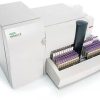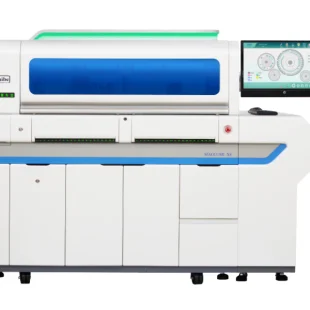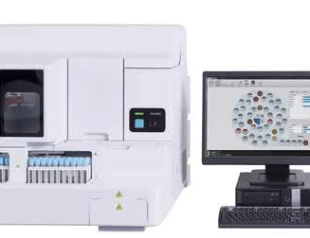- Your cart is empty
- Continue Shopping
The Roche Cobas 6800 Molecular Biology analyzer, By Roche Diagnostics Molecular Diagnostics belongs to the genetics category within Diagnostics. Genetics analyzes bodily fluid for biological markers
The Roche Cobas 6800 Molecular Biology analyzer, By Roche Diagnostics Molecular Diagnostics belongs to the genetics category within Diagnostics. Genetics analyzes bodily fluid for biological markers in the genome and proteome by applying Molecular Biology to medical testing. This testing is used to diagnose and monitor disease, detect futures risk and decide which therapies will work best for individual patients. Testing occurs on the genetic makeup of the bodily fluid. Test results are useful in a range of specialties including infectious disease, oncology, human leukocyte antigen typing, coagulation and pharmacogenomics. Molecular Biology does have overlap with Clinical Chemistry. There are several different types of testing within the Molecular Biology area including PCR, Molecular Cloning, Blotting and Microarrays. PCR (Polymerase Chain Reaction) is a very popular form of testing used in the Clinical Lab environment. It is a very versatile technique for copying DNA. It is fast, inexpensive and has excellent sensitivity and selectivity. There is also low risk of contamination. It is for these reasons PCR technology has become a great alternative to culture- or immunoassaybased testing methods for diagnosing many infectious diseases. Devices within Molecular Biology can have up to 3 type of testing protocols. The more protocols present in a device, the more detailed analysis and reporting there is. The 3 common protocols in order of complexity are Extraction, Amplification and Detection. The protocols are down as follows: Extraction: Extraction of the genetic material (DNA, RNA) from the initial sample Amplification: Amplification enables the genetic target to be multiplied which increases detection sensitivity. This step makes it possible to detect very small quantities of infectious agents that many other methods cannot. Detection: Once extraction and amplification is complete, the last protocol Detection is made possible by small molecules known as probes. These probes are designed to bind to the target if present in the sample. These probes release fluorescent signals that reveal certain pathogens or gene variations. Several genetic targets can be detected simultaneously in a single sample with the use of multiple probes with different fluorescent markers.















Reviews
There are no reviews yet.